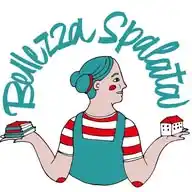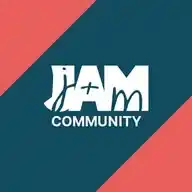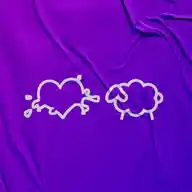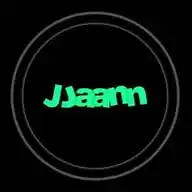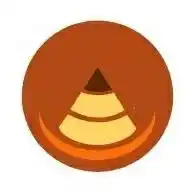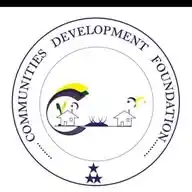
HueHub-CSS/PMS
11 subscribers
About HueHub-CSS/PMS
Welcome to HueHub-CSS/PMS! Your Gateway to a vibrant community of Innovative and Inovators https://www.blogger.com/profile/04404389193658251528
Similar Channels
Swipe to see more
Posts

*Today's Top Current Affairs* *16 Feb 2025* ❇️The *61st Munich Security Conference* ( *MSC 2025* ) is the annual meeting of the Munich Security Conference, taking place from 14 February to 16 February 2025 in *Munich* , *Germany* ❇️The 38th African Union (AU)Summit held on 15 & 16 Feb 2025 in *Addis, Ababa , Ethopia* ❇️East timor finally looks set to join Associaton of Southeast Asian Nations(ASEAN: *2025* ❇️Newzealand beats pakistan and won tri- nation series 2025.The Tri- nation series played between Pakistan,New Zealan and South Africa in: *Pakistan*

https://3614sskhan.blogspot.com/2025/02/english-exercise.html

https://3614sskhan.blogspot.com/2025/02/pair-of-words.html Pair of Words

.■》Biology 9th Class Important MCQs ■》Answers are given in comment section 1. If a scientist is studying the methods of inserting human insulin gene in bacteria, which branch of biology may this be? (A) Anatomy (B) Physiology (C) Biotechnology (D) Pharmacology 2. The word biology has been derived from two words: (A) Greek (B) British (C) Hindi (D) Persian 3. The study of living things is called: (A) Biotechnology (B) Biology (C) Chemistry (D) Farming 4. Zoology is the study of: (A) Animals (B) Plants (C) Microorganisms (D) Viruses 5. The scientific study of plants is called: (A) Zoology (B) Botany (C) Anatomy (D) Histology 6. The microscopic study of tissues is called: (A) Histology (B) Morphology (C) Microbiology (D) Cytology 7. The study of cell’s structure and function is called: (A) Genetics (B) Cell biology (C) Physiology (D) Anatomy 8. The study of internal structure of living things is called: (A) Genetics (B) Cell biology (C) Physiology (D) Anatomy 9. The study of genes and their roles in inheritance is called: (A) Biotechnology (B) Genetics (C) Geology (D) Information technology 10. The study of functions of living things is called: (A) Physiology (B) Autonomy (C) Morphology (D) Histology 11. Meaning of “Logos” is: (A) Activity (B) Structure (C) Thinking (D) Function 12. The study of the immune system of animals is called: (A) Parasitology (B) Immunology (C) Sociology (D) Environmental biology 13. The study of insects is called: (A) Biotechnology (B) Immunology (C) Parasitology (D) Entomology 14. Remainings of extinct organisms is called: (A) Corals (B) Fossils (C) Coral reefs (D) Endangered 15. The study of fossils is called: (A) Taxonomy (B) Cytobiology (C) Cell biology (D) Paleontology 16. The histology is the scientific study of: (A) Organs (B) Tissues (C) Cells (D) Muscles 17. Study of drugs and their effects on human body is called: (A) Socio biology (B) Parasitology (C) Entomology (D) Pharmacology 18. Famous book of Jabir Bin Hayan is: (A) Al-kheil (B) Al-Wahoosh (C) Al-Abil (D) Al-Nabatat 19. Entomology is the study of: (A) Tissues (B) Organelles (C) Insects (D) Bacteria 20. The study of the molecules of life is called: (A) Anatomy (B) Immunology (C) Physiology (D) Molecular biology 21. Breeding of cow belongs to: (A) Farming (B) Animal husbandry (C) Morphology (D) Genetics 22. Horticulture deals with the art of: (A) Gardening (B) Forestry (C) Domestic animals (D) Farming 23. Gardening relates to the profession: (A) Horticulture (B) Forestry (C) Agriculture (D) Farming 24. Transplantation of kidneys is example of: (A) Medicine (B) Morphology (C) Physiology (D) Surgery 25. Jabir Bin Hayan was born in: (A) Poland (B) China (C) Iran (D) Iraq 26. Who is the founder of medicine? (A) Bu Ali Sina (B) Jabir Bin Hayan (C) Abdul Malik Asmai (D) All 27. Bu Ali Sina has written a book on medicine named as: (A) Khalq-al-ansan (B) Al-Qanun-fi-al-Tib (C) Al-Haywan (D) Al-abil 28. Which book is known as canon of medicine in medicine? (A) Al-Qanun fi-al-Tib (B) Al-Haywan (C) Al-Abil (D) Al-Khail 29. Name of the famous book of Bu Ali Sina is: (A) Al-Nabatat (B) Al-Qanun fi-al-Tib (C) Al-Abil (D) Al-Khail 30. Abdul-Malik Asmai was born in: (A) 721 A.D (B) 740 A.D (C) 780 A.D (D) 980 A.D 31. The book Al-Qanun-fi-al-Tib is written by: (A) Jabir Bin Hayan (B) Bu Ali Sina (C) Abdul Malik (D) Ibn-e-Nafees 32. The famous book Al-Nabatat was written by: (A) Bu Ali Sina (B) Jabir Bin Hayan (C) Abdul Malik (D) Ibn-e-Nafees 33. The first Muslim scientist who studied animals in detail: (A) Jabir Bin Hayan (B) Al Razi (C) Bu Ali Sina (D) Abdul Malik Asmai 34. The writer of famous book “Al-Abil” is: (A) Jabir Bin Hayan (B) Abdul Malik Asmai (C) Bu Ali Sina (D) Ibn-e-Nafees 35. Botany is the study of: (A) Animals (B) Plants (C) Bacteria (D) Fungi 36. The branch of biology that deals with the study of internal structures: (A) Morphology (B) Anatomy (C) Histology (D) Physiology 37. The study of biomolecules and biochemical reactions is called: (A) Biochemistry (B) Biotechnology (C) Biology (D) Anatomy 38. It deals with the classification of organisms: (A) Taxonomy (B) Entomology (C) Anatomy (D) Botany 39. The organism which take food and shelter from living hosts and in turn harm them are called: (A) Microorganisms (B) Parasites (C) Consumers (D) Insects 40. Scientific knowledge is the common heritage of mankind was said by: (A) Jabir Bin Hayan (B) Ibn E Haythem (C) Abdul Qadir (D) Abdul Salam 41. The scientific study of life is called: (A) Biology (B) Parasitology (C) Science (D) Bios 42. The study of form and structure of living organisms is called: (A) Genetics (B) Physiology (C) Anatomy (D) Morphology 43. The study of interaction between the organisms and their environment is called: (A) Environmental biology (B) Cell biology (C) Biotechnology (D) Entomology 44. The study of basic metabolism of photosynthesis is called: (A) Biophysics (B) Biochemistry (C) Biotechnology (D) Biometry 45. The profession which deals with the diagnosis and treatment of diseases in human is called: (A) Biotechnology (B) Genetics (C) Medicine (D) Animal husbandry 46. Jabir Bin Hayyan was born in: (A) 815 A.D (B) 740 A.D (C) 721 A.D (D) 980 A.D 47. Bu Ali Sina was born in: (A) 815 A.D (B) 740 A.D (C) 721 A.D (D) 980 A.D 48. A book “Al-Wahoosh” was written by: (A) Jabir Bin Hayan (B) Abdul Malik Asmai (C) Bu Ali Sina (D) Ibn-e-Nafees 49. A book “Kalq al-ansan” was written by: (A) Jabir Bin Hayan (B) Abdul Malik Asmai (C) Bu Ali Sina (D) Ibn-e-Nafees 50. Bu Ali Sina was called as ...... in the west: (A) Avicenna (B) Sina (C) Bu Ali (D) Ali Sina 51. The photograph of Bu Ali Sina commemorated on a ticket in: (A) Ireland (B) Germany (C) Italy (D) Poland 52. A book “Al-Khail” was written by: (A) Jabir Bin Hayan (B) Abdul Malik Asmai (C) Bu Ali Sina (D) Ibn-e-Nafees 53. Members of the same species living in the same place at the same time make a: (A) Habitat (B) Ecosystem (C) Community (D) Population 54. Which of these major bio elements is in the highest % in protoplasm? (A) Carbon (B) Hydrogen (C) Nitrogen (D) Oxygen 55. Which of the following group includes organisms all of which are absorptive in their nutrition? (A) Protests (B) Fungi (C) Bacteria (D) Animals 56. Similar cells organized into groups and perform same functions are known as: (A) Organ (B) Organ system (C) Tissue (D) Organelle 57. Which of these tissues also make the glandular tissue in animals? (A) Nervous tissue (B) Epithelial tissue (C) Connective tissue (D) Muscular tissue 58. The level of organization that is less definite in plants is: (A) Organism level (B) Organ system level (C) Organ level (D) Tissue level 59. What is TRUE about Volvox? (A) Unicellular prokaryote (B) Unicellular eukaryote (C) Colonial eukaryote (D) Multicellular eukaryote 60. When we study the feeding relationship among different animal species of a forest, at what level of organization we are studying? (A) Organism level (B) Population level (C) Community level (D) Biosphere level 61. Which one of these elements has the highest percentage in living organisms? (A) Carbon (B) Hydrogen (C) Oxygen (D) Nitrogen 62. The number of bio elements is: (A) 10 (B) 16 (C) 14 (D) 35 63. How many elements make 99% of the total mass? (A) Four (B) Six (C) Eight (D) Ten 64. The element that is 3% of the total mass of living organisms is: (A) Hydrogen (B) Carbon (C) Oxygen (D) Nitrogen 65. Which bio element makes most of the composition of organism’s body? (A) Hydrogen (B) Carbon (C) Oxygen (D) Nitrogen 66. Example of bio element is: (A) Aluminium (B) Cobalt (C) Bromine (D) Carbon 67. An example of macro molecule is: (A) Water (B) Glucose (C) Protein (D) Sodium chloride 68. What is the function of mitochondria? (A) Protein synthesis (B) Transport (C) Respiration (D) Excretion 69. Protein synthesis in cell is the function of: (A) Golgi complex (B) Mitochondria (C) Nucleus (D) Ribosomes 70. The level of organization that is less definite in plant is: (A) Tissue level (B) Organ level (C) Organ system level (D) Individual level 71. Area of the environment, where an organism lives is called: (A) Habitat (B) Biosphere (C) Ecosystem (D) Population 72. The part of Earth where communities of living organisms exist is called: (A) Armosphere (B) Oosphere (C) Biosphere (D) Population 73. Epidermal tissue is found in: (A) Pigeon (B) Sparrow (C) Crow (D) Onion 74. The highest level of biological organization is: (A) Species (B) Tissue (C) Ecosystem (D) Biosphere 75. The mustard plant is sown in: (A) Winter (B) Summer (C) Spring (D) Autumn 76. The smallest size of bacteria is: (A) 0.1\mu m (B) 0.2\mu m (C) 0.3\mu m (D) 0.4\mu m 77. Which of the following is the reproductive part of a plant? (A) Root (B) Stem (C) Leaf (D) Flower 78. The asexual reproduction in hydra takes place through: (A) Mitosis (B) Budding (C) Cutting (D) Spore formation 79. Budding process is found in: (A) Fern (B) Onion (C) Cockroach (D) Hydra 80. Number of sense organs are: (A) Five (B) Six (C) Seven (D) Eight 81. Naturally occurring elements are: (A) 90 (B) 92 (C) 94 (D) 96 82. ...... is a biomolecule: (A) Chlorine (B) Iodine (C) Proton (D) Protein 83. ……… is an organ: (A) Stomach (B) Neuron (C) Electron (D) Carbon 84. Individuals of the same species, living together at a same time make a level: (A) Habitat (B) Ecosystem (C) Community (D) Population 85. Areas where living things interact with the nonliving components of the environment is called: (A) Population (B) Community (C) Ecosystem (D) Specie 86. Which of the following organism does not represent unicellular organization? (A) Amoeba (B) Volvox (C) Paramecium (D) Bacteria 87. How many elements make 1% of the total mass? (A) Four (B) Six (C) Eight (D) Ten 88. The element that is 10% of the total mass of living organisms is: (A) Hydrogen (B) Carbon (C) Oxygen (D) Nitrogen 89. The element that is 65% of the total mass of living organisms is: (A) Hydrogen (B) Carbon (C) Oxygen (D) Nitrogen 90. The element that is 2% of the total mass of living organisms is: (A) Hydrogen (B) Carbon (C) Oxygen (D) Calcium 91. The scientific name of frog is: (A) Brassica campestris (B) Rana tigrina (C) Homo speines (D) None 92. Which one of the characteristics is not in a good hypothesis? (A) Must be testable (B) Must move prediction (C) Must be correct (D) Must be consistent with available data 93. At which point is a biological most likely to use reasoning? (A) While taking observation (B) During hypothesis formulation (C) During data organization (D) None of these 94. “Freezing point of water is less than its boiling point.” Which type observation is it? (A) Qualitative (B) Quantitative (C) Competitive (D) Non competitive 95. Plasmodium causes to spread the disease: (A) Yellow fever (B) T.B (C) Polio (D) Malaria 96. Meaning of “aria” is: (A) Air (B) Smoke (C) Odour (D) Smell 97. Quinine was the only effective remedy for malaria from the: (A) 15th to the 17th century (B) 17th to the 20th century (C) 19th to the 20th century (D) 16th to the 19th century 98. Quinine is obtained from the bark of: (A) Quina- quina tree (B) Thuja tree (C) Cinchona tree (D) Pinus tree 99. A chemical found in the bark of cinchona plant is: (A) Aspirine (B) Tetracycline (C) Quinine (D) Morphane 100. Who suggested that mosquitoes are involved in the transmission of malaria? (A) Laveran (B) Ronald ross (C) A.F.A. king (D) None of these 101. The army physician who observed at malaria in 1878: (A) Ronald ross (B) Mendel (C) A.F.A. king (D) Laveran 102. Malaria is caused by: (A) Bacteria (B) Plasmodium (C) Virus (D) Mosquito 103. A doctor A.F.A. king made 20 observations on malaria in: (A) 1883 AD (B) 1985 AD (C) 1829 AD (D) 1825 AD 104. Which scientist firstly observed microorganisms in the blood of a malarial patient? (A) Ronald ross (B) Laveran (C) A.F.A king (D) Robert Hooke 105. Scientists who performed experiments of malaria on sparrow: (A) Ronald ross (B) A.F.A. king (C) Laveran (D) Bu Ali Sina 106. Malaria is spread in sparrow by mosquito: (A) Culex (B) Anopheles (C) Dengue (D) Aphids 107. In human beings’ malaria is transmitted by: (A) Marshy areas (B) Anopheles mosquito (C) Culex mosquito (D) Any mosquito 108. In sparrows malaria is spread by: (A) Culex mosquito (B) Anopheles mosquito (C) Marshy areas (D) Any mosquito 109. Only female mosquitoes bite humans and sparrow to cause malaria because: (A) They need blood of mammals and birds for maturation of their eggs (B) Male mosquitoes cannot bite (C) Plasmodium can survive only in female mosquitoes (D) All of these 110. The female mosquitoes need……… to grow their eggs: (A) The blood of birds (B) The blood of mammals (C) Both (D) None of these 111. The growth of plasmodium in human body takes place in: (A) Stomach (B) Small intestine (C) Liver (D) Kidneys 112. Dengue fever is spread by: (A) Culex mosquito (B) Aedes mosquito (C) Anopheles mosquito (D) Female anopheles mosquito 113. Malaria is due to plasmodium, is called: (A) Deduction (B) Hypothesis (C) Theory (D) Law 114. Sense organs are ……… in number: (A) Five (B) Six (C) Seven (D) Eight 115. The hypothesis, which are often tested and never rejected become: (A) Laws (B) Principles (C) Theories (D) Results 116. The senses used by biologist for observation are: (A) Two (B) Three (C) Four (D) Five 117. Biologists use discussion and reasoning procedure to formulate a: (A) Hypothesis (B) Law (C) Theory (D) Data 118. “It should be a general statement” belongs to: (A) Experiment (B) Theory (C) Hypothesis (D) Deduction 119. “Plasmodium is the cause of malaria.” This statement is a: (A) Hypothesis (B) Deduction (C) Theory (D) Law 120. The tentative explanation of the observations is called: (A) Problem (B) Hypothesis (C) Deduction (D) Result 121. The logical consequences of a hypothesis are called: (A) Deductions (B) Observations (C) Biological problem (D) Theory 122. The biological method has played an important role in scientific research for almost: (A) 350 years (B) 500 years (C) 275 years (D) 725 years 123. No. of steps of biological method are: (A) Four (B) Five (C) Six (D) Seven 124. The first step to solve biological problem is: (A) Experiment (B) Hypothesis formation (C) Observation (D) Deduction 125. The most basic step of biological method is: (A) Experimentation (B) Observation (C) Deduction (D) Hypothesis 126. To test the hypothesis biologists perform: (A) Experiments (B) Deduction (C) Observations (D) Hypothesis 127. Galileo made his experiments in: (A) 1656 (B) 1625 (C) 1590 (D) 1450 128. The types of observations is: (A) Two (B) Three (C) Four (D) Five 129. Which observations are considered more accurate? (A) Qualitative (B) Quantitative (C) Both (D) None 130. The freezing point of water is: (A) 10oC (B) -4oC (C) 4oC (D) 0oC 131. The boiling point of water is: (A) 100oC (B) 357oC (C) 300oC (D) 50oC 132. “A liter of water is havier than a liter of ethanol” which type of observation is it? (A) Qualitative (B) Quantitative (C) Competitive (D) Non competitive 133. Reading and studying is included in: (A) Observations (B) Hypothesis formation (C) Deduction (D) Reporting the results 134. Observations are made with ……… senses: (A) Three (B) Four (C) Five (D) Six 135. Biologists perform experiments to see if the hypothesis is: (A) True (B) False (C) May be both (D) None 136. For deduction, a hypothesis is taken as: (A) True (B) False (C) Accurate (D) None 137. “All plant cells have a nucleus.” This statement is a: (A) Deduction (B) Result (C) Hypothesis (D) Observation 138. Biologists perform ……… to see if a hypothesis is true or not: (A) Deductions (B) Experiments (C) Results (D) Observations 139. The physicians were familiar with malaria more than ……… years ago: (A) 500 (B) 1000 (C) 2000 (D) 2500 140. The word malaria is derived from two ……… words: (A) Greek (B) Latin (C) English (D) Italian 141. The word “mala” means: (A) Air (B) Smoke (C) Smell (D) Bad 142. The new world (America) was discovered in: (A) 16th century (B) 17th century (C) 18th century (D) 19th century 143. The bark of which tree was very suitable for curing many fevers? (A) Quina-quina (B) Keekar (C) Pines (D) Pomegranate 144. The disease which has killed more people than any other disease is: (A) AIDS (B) Hepatitis (C) Malaria (D) Typhoid 145. A French army physician Laveran began to search for the cause of Malaria in: (A) 1800 (B) 1850 (C) 1878 (D) 1820 146. “If plasmodium is the cause of malaria, then all persons ill with malaria should have plasmodium in their bloiod.” It is: (A) Hypothesis (B) Deduction (C) Law (D) Observation 147. Deductions are tested by: (A) Experiments (B) Observations (C) Readings (D) Writings 148. The blood of 100 healthy persons were tested under the microscope, this group is called: (A) Control group (B) Malarial group (C) Infected group (D) Healthy group 149. Ronald Ross done his experiments in: (A) India (B) Japan (C) China (D) England 150. Proportion means to join two equal ratio by the sign of: (A) Equality (B) Division (C) Addition (D) Subtraction 151. A scientific law of principle is an irrefutable: (A) Hypothesis (B) Deduction (C) Experiment (D) Theory 152. The information such as names, date and values made from observations and experimentations is called: (A) Data (B) Collection (C) Information (D) Terms 153. The term which is necessary to prove or disprove a hypothesis by experiments is: (A) Data organization (B) Data (C) Data analysis (D) None 154. Ratio may be expressed by: (A) : : (B) ^ (C) + (D) (:) 155. Joining two equal ratios by the sign of equal is called: (A) Quantity (B) Term (C) Proportion (D) Equality 156. Biodiversity of species means its: (A) Ecosystem (B) Variety (C) Population (D) Community 157. Biodiversity is richer in: (A) Deserts (B) Temperate regions (C) Polar regions (D) Tropics 158. The kinds of organisms inhabit the earth are: (A) 10 millions (B) 12 millions (C) 14 millions (D) 16 millions 159. At least ……… kinds of organisms inhabit the Earth: (A) 5 million (B) 10 million (C) 15 million (D) 20 million 160. The principle groups of organisms are: (A) Four (B) Five (C) Six (D) Eight 161. Diversity means: (A) Kinds (B) Variety (C) Terms (D) Sequence 162. The fewer species live in the: (A) Deserts (B) Temperate regions (C) Polar regions (D) Tropic regions 163. Biodiversity found on the Earth is a result of ……… years of evolution: (A) 10 billion (B) 2 billion (C) 4 billion (D) 1 billion 164. An important advantage of biodiversity is: (A) Food for humans (B) Drugs (C) Building materials (D) All 165. Classification means the grouping of organisms on the basis of: (A) How they feed (B) The features they have in common (C) How they breathe (D) How they can survive 166. Species that are in the same ……are more closely related than species that are in the same ……… (A) Phylum – class (B) Family – order (C) Class – order (D) Family – genus 167. A related group of genera comprises: (A) An order (B) A family (C) A class (D) A phylum 168. Branch of biology which deals with the study of classification of organisms and their evolutionary history is called: (A) Taxonomy (B) Systematics (C) Genetics (D) Bioinformatics 169. Members of the same species living in the same time make a level: (A) Population (B) Community (C) Ecosystem (D) Habitat 170. The areas where living organisms interact with nonliving components of the environment are called: (A) Population (B) Community (C) Ecosystem (D) Species 171. The basic unit of classification is: (A) Phylum (B) Class (C) Species (D) Order 172. The genus is a group of related: (A) Orders (B) Species (C) Classes (D) Families 173. The taxon of order was introduced by: (A) John Ray (B) Rivinus (C) Ibn-e-Rushd (D) Aristotle 174. Biologists know ……… types of animals: (A) 1.5 millions (B) 0.5 millions (C) 8.3 millions (D) 3.8 millions 175. Biologists know about ……… species of plants: (A) 0.5 million (B) 0.2 million (C) 2 million (D) 10 million 176. A family group consists of related: (A) Classes (B) Orders (C) Genera (D) Species 177. The largest taxon is: (A) Family (B) Order (C) Class (D) Kingdom 178. The branch of biology which deals with classification is called: (A) Anatomy (B) Taxonomy (C) Physiology (D) Histology 179. The total aims of classification are: (A) Two (B) Three (C) Four (D) Five 180. Sparrows are more closely related to: (A) Insects (B) Animals (C) Plants (D) Pigeons 181. What characteristics can be used to study the similarities and dissimilarities in organisms? (A) Shapes (B) Food (C) Height (D) DNA 182. The groups into which organisms are classified are known as: (A) Genus (B) Community (C) Texon (D) Variety 183. A group of related classes is: (A) Phylum (B) Class (C) Species (D) Order 184. The scientific name of pea plant is: (A) Homo sapiens (B) Brassica campastris (C) Pisum sativum (D) None 185. Who proposed the third kingdom system? (A) Ernst Hackle (B) E. Chatton (C) Margulis (D) Schwartz 186. Who introduced the system of classification of organisms for first time? (A) Aristotle (B) Robert Whitakar (C) Artist Hackel (D) Carlous 187. Carlous Linnaeus divided the nature into ……… kingdoms: (A) Two (B) Three (C) Four (D) Five 188. The philosopher who first introduced the classification of organisms was: (A) John Ray (B) Augustus Rivinus (C) Carolus Linnaeus (D) Aristotle 189. Aristotle classified organisms known at that time into ……… groups: (A) Two (B) Three (C) Four (D) Five 190. Who described the characteristics of 350 species of animals in his book? (A) Aristotle (B) Abu-Usman Umer Aljahiz (C) Andrea Caesalpino (D) John Ray 191. Andrea Caesalpino divided plants into ……… groups: (A) Three (B) Five (C) Ten (D) Fifteen 192. The groups of Andrea Caesalpino is called: (A) Genera (B) Plantae (C) Genus (D) Species 193. Viruses are assigned to the Kingdom: (A) Fungi (B) Monera (C) Protista (D) None of these 194. A certain organism is multicellular adapted for photosynthesis and has multicellular sex organs. To which kingdom does it belong? (A) Protista (B) Fungi (C) Plantae (D) Animalia 195. In which kingdom would you classify unicellular eukaryotes? (A) Fungi and protists (B) Fungi and monera (C) Only protists (D) Only fungi 196. Mushrooms are the example of kingdom: (A) Plantae (B) Monera (C) Protista (D) Fungi 197. Bacteria are assigned to kingdom: (A) Fungi (B) Monera (C) Protista (D) Pourifera 198. Which organism is included in kingdom monera? (A) Virus (B) Algae (C) Fungi (D) Synobacteria 199. Kingdom of ferns is: (A) Fungi (B) Protista (C) Plantae (D) Animalia 200. Kingdom Protista has types: (A) Three (B) Four (C) Five (D) Six 201. The common example of kingdom fungi is: (A) Ferns (B) Algae (C) Mosses (D) Mushrooms 202. All the members of which group intake their food by absorbing in the body? (A) Protists (B) Fungi (C) Bacteria (D) Animals 203. Who introduced the five kingdom system of classification? (A) Aristotle (B) Carolous Linnaeus (C) Robert Brown (D) Robert Whittaker 204. The broadcast category of organisms in biological taxonomy is: (A) Class (B) Phylum (C) Kingdom (D) Family 205. Which of these is acellular? (A) Human (B) Bacteria (C) Fungi (D) Virus 206. The smallest cells are of which bacteria? (A) E. Coli (B) Cytoplasm (C) Mico plasma (D) Strepto Coli 207. Infertile animal is: (A) Donkey (B) Horse (C) Mule (D) Monkey 208. Basically, cell membrane is made of: (A) Carbohydrates and proteins (B) Carbohydrates and lipids (C) Proteins and vitamins (D) Lipids and proteins 209. In fungi, cell wall is made of: (A) Lignin (B) Cellulose (C) Peptide glycon (D) Chitin 210. Thin layer of inner membrane of mitochondria is called: (A) Christy (B) Metrics (C) Struma (D) Thylakoid 211. The part of earth inhabited by organism's communities is known as: (A) Habitat (B) Population (C) Community (D) Biosphere 212. The kingdom which have unicellular organisms is: (A) Animalia (B) Plantae (C) Fungi (D) Protista 213. Prions are composed of: (A) Proteins (B) Vitamins (C) Lipids (D) Enzymes 214. In binomial nomenclature, the first letter of the ……… name is capitalized. (A) Family (B) Class (C) Genus (D) Species 215. Which of the following may be the correct way of writing the scientific name of an organism? (A) Canis lupis (B) Saccharaum (C) Grant’s gazelle (D) E.Coli 216. The scientific name of onion is: (A) Cassia fistula (B) Allium cepa (C) Solanum tuberosum (D) Rose alba 217. Scientific name of human being is: (A) Pisum sativum (B) Homo sapiens (C) Rosa indica (D) Allium cepa 218. Scientific name of house crow is: (A) Corves Splendens (B) Allium Cepa (C) Rana Tigrina (D) Asterias Rubens 219. In binomial nomenclature, the first name is of: (A) Family (B) Species (C) Genus (D) Class 220. In binomial nomenclature, the second name is of: (A) Family (B) Species (C) Genus (D) Class 221. The scientific name of sea star is: (A) Corves Splendens (B) Allium Cepa (C) Rana Tigrina (D) Asterias Rubens 222. In which season houbara bustard migrate to Pakistan and settles here? (A) Summer (B) Spring (C) Autumn (D) Winter 223. When the last member of a particular species dies, the species is said to be………? (A) Established (B) Extinct (C) Threatened (D) Endangered 224. Himalayan jungle project was started in: (A) 1991 (B) 1995 (C) 1997 (D) 2013 225. Sea star (Star fish) eats: (A) Algae (B) Fungi (C) Protests (D) Snails 226. Pakistan’s national bird is: (A) Chakor partridge (B) Parrot (C) Sparrow (D) Pigeon 227. Houbara bustared is a large: (A) Fish (B) Bird (C) Reptile (D) Plant 228. Which is the national animal of Pakistan? (A) Cow (B) Markhor (C) Sheep (D) Buffalo 229. Today ……… million people live on Earth: (A) 600 (B) 700 (C) 200 (D) 5000 230. In 2010, population of Pakistan was ……… million: (A) 143.5 (B) 153.5 (C) 163.5 (D) 173.5 231. Number of persons increasing in the world population after every one minute is: (A) 180 (B) 290 (C) 280 (D) 490 232. The daily increase in world’s population is: (A) 2 lac sixty thousands (B) 7 thousand 5 hundreds (C) Eighty thousand (D) Sixteen hundred fifty 233. In which reason, Hobara busterd migrate to Pakistan? (A) Summer (B) Winter (C) Spring (D) Autumn 234. There are ……… micrometers in one millimeter? (A) 10 (B) 100 (C) 1000 (D) 10000 235. The use of microscope is called: (A) Magnification (B) Resolution (C) Compound microscope (D) Microscopy 236. The first microscope was developed by: (A) Zacharias Janssen (B) Matthias schleden (C) Aristotle (D) Robert Brown 237. Human eye can distinguish two objects placed at a distance of: (A) 0.05 mm (B) 0.1 mm (C) 0.08 mm (D) 0.5 mm 238. A photograph taken from a microscope is called a: (A) Microscopy (B) Resolution (C) Micrograph (D) Magnification 239. Magnification of light microscope is: (A) 300 X (B) 1500 X (C) 750 X (D) 3500 X 240. Resolving power of light microscope is: (A) 0.1\mu m (B) 0.2 \mu m (C) 0.3 \mu m (D) 0.4 \mu m 241. The resolution of human eye is: (A) 0.1 mm (B) 0.2 mm (C) 0.3 \mu m (D) 0.4 \mu m 242. The movement of amoeba can be studied by: (A) Transmission electron microscope (B) Light microscope (C) Electron microscope (D) Hand lens 243. When was nucleus discovered in a plant cell? (A) 1831 AD (B) 1664 AD (C) 1833 AD (D) 1834 AD 244. Who discovered nucleus in a cell in 1831? (A) L. Pasteur (B) Schwann (C) Schleiden (D) Robert Brown 245. The scientist who firstly introduced the cell: (A) Robert Brown (B) Aristotle (C) Robert Hooke (D) Schwann 246. Robert Hooke is a/an ……… scientist: (A) Iranian (B) Greek (C) British (D) Arabic 247. Robert Hooke used microscope to examine cork in: (A) 1958 (B) 1665 (C) 1560 (D) 1470 248. “All cells are formed from pre-existing cells.” Is the saying of: (A) Pasteur (B) Robert Hooke (C) Darwin (D) Rudolf Virchow 249. The first microscope was made in: (A) 1995 (B) 1895 (C) 1595 (D) 1685 250. Cell was discovered in: (A) 1665 (B) 1965 (C) 1974 (D) 1995 251. Who discovered nucleus in plant cell? (A) Robert Hooke (B) Robert Brown (C) Leueen Hook (D) Schwann 252. Which of these materials is not a component of the cell membrane? (A) Lipids (B) Carbohydrates (C) Proteins (D) DNA 253. The ……… is major component of plant cell walls. (A) Chitin (B) Peptidoglycan (C) Cellulose (D) Cholesterol 254. The ….is the membrane enclosed structure in eukaryotic cells that contains the DNA of the cell. (A) Mitochondrion (B) Chloroplast (C) Nucleolus (D) Nucleus 255. Ribosomes are constructed in the? (A) Endoplasmic (B) Nucleoid (C) Nucleolus (D) Nuclear pore. 256. Rough endoplasmic reticulum is the area in a cell where ……. are synthesized. (A) Polysaccharides (B) Proteins (C) Lipids (D) DNA 257. Smooth endoplasmic reticulum is the area in a cell where ……. are synthesized. (A) Polysaccharides (B) Proteins (C) Lipids (D) DNA 258. The mitochondrion functions in…….? (A) Lipid storage (B) Protein synthesis (C) Photosynthesis (D) Cellular respiration 259. The thin extensions of the inner mitochondrial membrane are known as: (A) Cristae (B) Matrix (C) Thylakoids (D) Stroma 260. The chloroplast functions in: (A) ATP synthesis (B) Protein synthesis (C) Photosynthesis (D) DNA replication 261. Which of these cellular organelles have their own DNA? (A) Chloroplast (B) Nucleus (C) Mitochondrion (D) All of these 262. Cell walls are found in these organisms, except for: (A) Plants (B) Animals (C) Bacteria (D) Fungi 263. Which one is the main component of a plant cell wall? (A) Chitin (B) Peptidoglycan (C) Cellulose (D) Cholesterol 264. Which of these do not have cell wall? (A) Fungi (B) Algae (C) Prokaryotes (D) Protozoa 265. What is called the layer of cutin in plants? (A) Cuticle (B) Epidermis (C) Cortex (D) Leaf hairs 266. Fluid mosaic model belongs to: (A) Cell wall (B) Cell membrane (C) Dermis (D) Pericycle 267. The fluidity of cell membrane is due to: (A) Protein (B) Vitamin (C) Lipids (D) Glycerine 268. Elasticity of cell membrane is due to: (A) Lipid (B) Water (C) Protein (D) Vitamin 269. The stock of thylakoids is called: (A) Leucoplast (B) Struma (C) Cristae (D) Granum 270. Which of the following is not a part of a cell membrane? (A) DNA (B) Minerals (C) Carbohydrates (D) Lipids 271. The organelle which produces energy is called: (A) Ribosome (B) Vacuole (C) Nucleus (D) Mitochondria 272. The cell responsible for coordination in body is: (A) Bone cell (B) Nerve cell (C) Heart cell (D) Skin cell 273. Which of the following is a site of protein synthesis? (A) Ribosomes (B) Vacuole (C) Mitochondria (D) Nucleus 274. The number of sub units of ribosomes is: (A) Two (B) Four (C) Six (D) Eight 275. Where are ribosomes synthesized? (A) Endoplasmic reticulum (B) Nucleotide (C) Nucleolus (D) Nuclear pore 276. Which of the following is involved in aerobic respiration? (A) Mitochondria (B) Endoplasmic reticulum (C) Ribosomes (D) Vacuole 277. In cell aerobic respiration sites are: (A) Golgi bodies (B) Ribosomes (C) Mitochondria (D) Chloroplast 278. The function of mitochondria is: (A) Lipid storage (B) Cellular respiration (C) Protein synthesis (D) Photosynthesis 279. Rough endoplasmic reticulum serves a function in the synthesis of: (A) Carbohydrates (B) Protein (C) Lipids (D) Vitamin 280. Which of the organelles have their own DNA? (A) Endoplasmic reticulum (B) Ribosomes (C) Mitochondria (D) Golgi bodies 281. Golgi was awarded Nobel prize in: (A) 1908 (B) 1807 (C) 1906 (D) 1916 282. Which of these major bio elements is in the highest percentage in living bodies? (A) O (B) N (C) C (D) H 283. The flattened sacs in a cell are called: (A) Thylakoid (B) Cristae (C) Cisternae (D) Centriole 284. Colourless plastids are called: (A) Chloroplast (B) Leucoplast (C) Chromoplast (D) Etioplast 285. Who discovered lysosomes? (A) TWK (B) Brown (C) King (D) Duve 286. Major component of plant cell wall is: (A) Chitin (B) Peptidoglycan (C) Cellulose (D) Cholesterol 287. Ribosomes are sites for synthesis of: (A) Proteins (B) RNA (C) DNA (D) Glucose 288. Struma is found in: (A) Mitochondria (B) Ribosome (C) Golgi body (D) Chloroplast 289. The most common chemical in primary cell wall is: (A) Glucose (B) Cellulose (C) Fructose (D) Maltose 290. The major energy production centers are: (A) Plastids (B) Mitochondria (C) Ribosomes (D) Golgi bodies 291. Cisternae belongs to: (A) Mitochondrion (B) Golgi apparatus (C) Vacuole (D) Nucleus 292. Lysosomes were discovered by (A) Christian Rene De Duve (B) Camillo Golgi (C) Schleden (D) Robert Brown 293. The site where ribosomal RNA is formed is called: (A) Chromatin (B) Cytoplasm (C) Mitochondria (D) Nucleolus 294. The ribosomes are made in: (A) Nucleus (B) Nucleolus (C) Endoplasmic (D) Reticulum 295. Microtubules are made up of ……… proteins: (A) Hemoglobin (B) Myoglobin (C) Actin (D) Tubulin 296. The outermost layer of cell wall is made up of: (A) Cellulose (B) Chitin` (C) Lignin (D) All 297. Microfilaments are made up of a protein: (A) Actin (B) Tubulin (C) Flagellum (D) Myosin 298. In the cell wall of a plant the chemical present is called: (A) Potassium (B) Chitin (C) Sodium (D) Cellulose 299. Cell wall is absent in: (A) Plants (B) Fungi (C) Bacteria (D) Animals 300. The secondary cell wall of plant cell is made up of: (A) Cellulose (B) Chitin (C) Lignin (D) All of these 301. The cell wall of fungi is made up of: (A) Cellulose (B) Lignin (C) Chitin (D) Peptidoglycan 302. The cell wall of prokaryotes is made up of: (A) Cellulose (B) Lignin (C) Chitin (D) Peptidoglycan 303. The diameter of human red blood cell is: (A) 0.5 $$\mu m (B) 3 $$\mu m (C) 8 $$\mu m (D) 0.2 $$\mu m 304. The size of red blood cells is: (A) 20.2 $$\mu m (B) 30.2 $$\mu m (C) 40.2 $$\mu m (D) 120.2 $$\mu m 305. Gas exchange in gills and lungs occurs by the process: (A) Diffusion (B) Osmosis (C) Active transport (D) Turgor 306. The movement of molecules from an area of lower concentration to the area of higher concentration is called: (A) Diffusion (B) Osmosis (C) Passive transport (D) Active transport 307. The movement of molecules from an area of higher concentration to the area of lower concentration is called: (A) Osmosis (B) Active transport (C) Diffusion (D) Passive transport 308. Plant tissues which have ability to divide are: (A) Epidermal tissues (B) Ground tissues (C) Support tissues (D) Meristematic tissues 309. Which types of muscles are responsible for bird’s wings flapping? (A) Skeletal muscles (B) Smooth muscles (C) Cardiac muscles (D) Epithelial tissues 310. Permanent tissues originate from the tissues: (A) Epidermal (B) Merisstematics (C) Ground (D) Xylem 311. Cardiac muscles are present in walls of: (A) Lungs (B) Heart (C) Kidney (D) Stomach 312. The tissues which are made up of single type of cells are called: (A) Permanent tissues (B) Compound tissues (C) Support tissues (D) Simple tissues 313. Polymer of amino acids and sugars is: (A) Peptidoglycan (B) Glycolipid (C) Phospholipid (D) Glycogen 314. Bone is an example of: (A) Epithelial tissue (B) Nervous tissue (C) Connective tissue (D) Muscle tissue 315. Heart beat is made by: (A) Smooth muscles (B) Skeletal muscles (C) Cardiac muscles (D) Epithelial tissues 316. The study of animal tissues is done by: (A) Rudolf Virchow (B) Theoder Schwann (C) Robert Hooke (D) Louis Pasteur 317. In which stage of the cell cycle each chromosome is duplicated and so it consists of two chromatids? (A) G1 Phase (B) S Phase (C) M Phase (D) G2 Phase 318. During which phase of mitosis spindles are formed? (A) Prophase (B) Metaphase (C) G2 Phase (D) Interphase 319. In which stage of the cell cycle, the cell is preparing to begin DNA replication? (A) G1 Phase (B) S Phase (C) M Phase (D) G2 Phase 320. In which stage of the cell cycle most cells spend their lives? (A) Prophase (B) Metaphase (C) Interphase (D) Telophase 321. Prior to cell division, each chromosome replicates or duplicates its genetic material. The products are connected by a centromere and are called: (A) Sister chromosomes (B) Homologous chromosomes (C) Non-sister chromatids (D) Sister chromatids 322. Which event distinguishes meiosis from mitosis? (A) Condensation of chromosomes (B) Loss of the nuclear membrane (C) Formation of metaphase plate (D) Pairing of homologous chromosomes 323. For mitosis, the chromosomes of cell duplicate during interphase. When do the chromosomes duplicate for meiosis? (A) Before meiosis I (B) Before meiosis II (C) During meiosis I (D) Do not duplicate 324. The phase of cell cycle in which cell prepares itself for division is called: (A) Prophase (B) Interphase (C) Metaphase (D) Telophase 325. In which stage of cell cycle, the cell is preparing enzymes for chromosome duplication? (A) G1 (B) G2 (C) S (D) M 326. In which stage of the cell cycle cells spend most of their lives? (A) Prophase (B) Metaphase (C) Interphase (D) Telophase 327. In ……… phase cells have temporarily or permanently stopped dividing: (A) G1 (B) M phase (C) S phase (D) G0 phase 328. Chromosomes are visible during: (A) Interphase (B) G1 phase (C) S phase (D) Cell division 329. Chromosomes are composed of: (A) Lipids (B) DNA (C) RNA (D) DNA and protein 330. At which stage of a cell cycle cell stop dividing? (A) G0 (B) G1 (C) G2 (D) S 331. At which stage cell doubles its chromosomes? (A) G1 (B) S (C) G2 (D) G0 332. The most basic characteristics of life: (A) Fermentation (B) Oxidation (C) Excretion (D) Reproduction 333. According to Rudolf Virchow, all cells come from: (A) Atoms (B) Molecules (C) Microorganisms (D) Cells 334. The major phases of cell cycle are: (A) Two (B) Three (C) Four (D) Five 335. The relatively short period of cell cycle is: (A) Mitotic phase (B) Inter phase (C) Metaphase (D) Telo phase 336. The time when the cell’s metabolic activity is very high is: (A) Mitotic phase (B) Inter phase (C) Metaphase (D) Telo phase 337. Interphase is divided into ……… phases: (A) Two (B) Three (C) Four (D) Five 338. The first phase of cell cycle is: (A) G1 phase (B) S phase (C) G2 phase (D) G0 phase 339. During G1 phase, the supply of proteins is: (A) Increased (B) Decreased (C) Remains same (D) None 340. Inter phase lasts for at least ……… of the total time required for cell cycle. (A) 70% (B) 60% (C) 90% (D) 95% 341. Proteins are synthesized in: (A) S phase (B) G0 phase (C) G1 phase (D) G2 phase 342. After the G2 phase of interphase, cell enters the: (A) G0 phase (B) M phase (C) G1 phase (D) S phase 343. Which of the following features of cell division are very different for the animal and plant cells? (A) Metaphase (B) Anaphase (C) Telophase (D) Cytokinesis 344. The division of cytoplasm is called: (A) Karyokinesis (B) Cytokinesis (C) Kinetokore (D) Mitoses 345. During which phase of mitosis, spindles are formed? (A) G2 (B) Interphase (C) Prophase (D) Metaphase 346. Complete set of spindle fibre is known as: (A) Centrosome (B) Mitotic spindle (C) Centromere (D) None 347. Which phase of cell division is very different in plants and animals? (A) Meta phase (B) Anaphase (C) Telophase (D) Cytokinesis 348. The division of nucleus is called: (A) Synapsis (B) Cytokinesis (C) Karyokinesis (D) Interphase 349. The animal which produces lost part with the process of regeneration is: (A) Paramecium (B) Sea star (C) Sea lion (D) Sea urchin 350. In which phase of mitosis nuclear envelop of a cell is broken down? (A) Prophase (B) Metaphase (C) Anaphase (D) Telophase 351. Regeneration process is found in: (A) Hydra (B) Funaria (C) Moss (D) Sea star 352. In which phase of a cell cycle spindle fibers are formed? (A) G2 phase (B) Interphase (C) Prophase (D) Metaphase 353. ……… is reversal of prophase: (A) Metaphase (B) Anaphase (C) Interphase (D) Telophase 354. Error in the control of mitosis may cause: (A) Cough (B) Constipation (C) Ulcer (D) Cancer 355. Process of formation of new tumors is known as: (A) Synapsis (B) Crossing over (C) Metastasis (D) Regeneration 356. A tumor, which remains in their original location is called: (A) Malignant (B) Benign (C) Metastasis (D) All 357. Mitosis consists of ……… phases: (A) One (B) Two (C) Three (D) Four 358. Star fish regains its lost limb by: (A) Budding (B) meiosis (C) Mitosis (D) Frag 359. During which phase the metabolic activities of cell are very high? (A) Prophase (B) Metaphase (C) Interphase (D) Anaphase 360. Which organisms regenerate its lost parts through mitosis? (A) Sea star (B) Horse (C) Mosquito (D) Frog 361. Mitosis is divided into ……… major sources: (A) Two (B) Three (C) Four (D) Five 362. Walther Flemming observed the division of cell in: (A) 1980 (B) 1590 (C) 1780 (D) 1880 363. Mitosis was first observed by: (A) Walther Flemming (B) Robert Hooke (C) Robert Brown (D) Chedwick 364. In mitosis, a cell is divided into ……… daughter cells: (A) Two (B) Three (C) Four (D) Five 365. During mitosis, the number of chromosomes in daughter cells ……… in the parent cells: (A) Double (B) Half (C) Equal (D) None 366. Mitosis occurs only in: (A) Prokaryotic cells (B) Eukaryotic cells (C) Unicellular cells (D) Multi cellular cells 367. The process in prokaryotes which is similar to mitosis is: (A) Meiosis (B) Binary fission (C) Budding (D) Regeneration 368. Binary fission occurs in: (A) Prokaryotic cells (B) Eukaryotic cells (C) Unicellular cells (D) Multi cellular cells 369. Karyokinesis is divided into ……… phases: (A) Two (B) Three (C) Four (D) Five 370. The highly ordered structure of chromatin is called: (A) Nucleus (B) Chromosomes (C) Cytoplasm (D) Cell membrane 371. In prophase, each chromosome is divided into ……… sister chromatids: (A) Two (B) Three (C) Four (D) Five 372. The cells which form the body cells: (A) Germ line cells (B) Somatic cells (C) Prokaryotic cells (D) Eukaryotic cells 373. Somatic cells form the ……… cells: (A) Body (B) Liver (C) Heart (D) Lungs 374. The cells which form the gemetes: (A) Germ line cells (B) Somatic cells (C) Prokaryotic cells (D) Eukaryotic cells 375. Germ line cells form: (A) Sperms (B) Gemetes (C) Body cells (D) None 376. Somatic cells undergo: (A) Mitosis (B) Meiosis (C) Cytokinesis (D) Prophase 377. Germ line cells undergo: (A) Mitosis (B) Meiosis (C) Cytokinesis (D) Prophase 378. The point where spindle fibre are attached is: (A) Kinetochore (B) Centrosome (C) Centrioles (D) Equator 379. Both centrosomes migrate: (A) Towards each other (B) Opposite to each other (C) Toward centre (D) None 380. A pair of centrioles is called: (A) Kinetochore (B) Centrosome (C) Spindle fibre (D) Chromosome 381. The arrangement of chromosomes along equator is called: (A) Metaphase plate (B) Phragmoplast (C) Mitotic spindle (D) Cytokinesis 382. Oscar hertwing discovered meiosis in: (A) 1875 (B) 1876 (C) 1877 (D) 1878 383. Meiosis was discovered for the first time by: (A) Rudolf Virchow (B) Walther Flemming (C) August Weismann (D) Oscar Hertwig 384. In which organism the Thomas Hunt Morgan observed the phenomenon of crossing over? (A) Bat (B) Mosquito (C) Fruit fly (D) Sparrows 385. The exchange of parts of chromatids of homologous chromosomes is called: (A) Chiasmata (B) Crossing over (C) Linkage (D) Phragmoplast 386. Which of the following distinguishes meiosis from mitosis? (A) The chromosomes number is reduced (B) Chromosomes undergo crossing over (C) The daughter cells are genetically different from the parent cell (D) All of these 387. Which phase is the longest in meiosis? (A) Prophase-2 (B) Prophase-1 (C) Telophase-2 (D) Metaphase-1 388. The phase in which crossing over occurs: (A) Anaphase (B) Metaphase (C) Prophase-2 (D) Prophase-1 389. In 1911, ……… observed crossing over in a fruit fly: (A) Morgan (B) Weisman (C) Mendel (D) Lamark 390. During meiosis one cell divides into daughter cells: (A) Two (B) Three (C) Four (D) Eight 391. Chiasmata is formed during: (A) Metaphase (B) Anaphase (C) Prophase (D) Telophase 392. The word meiosis is derived from a Greek work meion, which means: (A) To make smaller (B) To make bigger (C) To cut (D) To duplicate 393. The chromosomes arrange themselves along the equator of the cell in phase: (A) Prophase (B) Metaphase (C) Anaphase (D) Telophase 394. The interphase of meiosis is divided into ……… phases: (A) Two (B) Three (C) Four (D) Five 395. In meiosis, each diploid (2n) cell is divided into ……… haploid (1n) cells: (A) Three (B) Four (C) Five (D) Six 396. The main steps of meiosis 1 are: (A) Two (B) Three (C) Four (D) Five 397. The bivalents are also called: (A) Synapsis (B) Chiasmata (C) Tetrad (D) Crossing over 398. Accidental death of cells and living tissues known as: (A) Cancer (B) Apoptosis (C) Necrosis (D) Both A and C 399. Cells die each day by apoptosis in an adult human: (A) 50-100 billion (B) 50-80 billion (C) 50-90 billion (D) 50-70 billion 400. Sea star eats: (A) Algae (B) Fungi (C) Protists (D) Muscle 401. The disease which may be due to the lack of proper care to a wound site: (A) Cancer (B) Apoptosis (C) Necrosis (D) Both A and C 402. Spider bite can cause: (A) Cancer (B) Apoptosis (C) Necrosis (D) Both A and C 403. To what category of molecules do enzymes belong? (A) Carbohydrates (B) Lipids (C) Nucleic acids (D) Proteins 404. What is true about co factors? (A) Break hydrogen bonds in protein (B) Help facilitate enzyme activity (C) Increase activation energy (D) Are composed of protein 405. The optimum temperature for working of human enzymes is: (A) 58°C (B) 10°C (C) 37°C (D) 40°C 406. The molecules at which enzymes act are called: (A) Products (B) Substrates (C) Catalyst (D) Enzymes 407. Enzyme used for cleaning utensils is: (A) Amylase (B) Trypsin (C) Lipase (D) Tylon 408. The name of enzyme used in dish washing is: (A) Protease (B) Lipase (C) Amylase (D) Pepsin 409. Enzyme pepsin works in: (A) Mouth (B) Intestine (C) Oesophagus (D) Stomach 410. The concept of metabolism was first of all given by (A) Kuhne (B) Koshland (C) Ibn-e-Nafees (D) Emil fisher 411. The term metabolism is derived from which language? (A) Latin (B) Greek (C) German (D) Arabic 412. The biochemical reactions in which larger molecules are synthesized, are called: (A) Anabolism (B) Catabolism (C) Metabolism (D) Enzymatic reaction 413. All biochemical reactions occurring in living organisms necessary for life are called as: (A) Metabolism (B) Anabolism (C) Catabolism (D) Mutalism 414. Who used the term enzyme first time? (A) Oscar Hurtwig (B) Winhelm Kuhne (C) W- Fleming (D) T.H Morgan 415. Almost all enzymes are: (A) Protein (B) Vitamins (C) Carbohydrates (D) Fats 416. Chemically enzymes are: (A) Protein (B) Carbohydrates (C) Lipids (D) Fats 417. Structurally enzymes are made of: (A) Minerals (B) Amino acids (C) Vitamins (D) Fats 418. The meaning of metabolism is: (A) To increase (B) To decrease (C) To change (D) Be normal 419. The biochemical reactions in which smaller molecules are synthesized, are called: (A) Anabolism (B) Catabolism (C) Metabolism (D) Enzymatic reaction 420. The enzymes ……… the reaction: (A) Speeds up (B) Slows down (C) Remains same (D) None 421. The minimum energy required to start a reaction is called: (A) Activation energy (B) Reaction energy (C) Initial energy (D) Final energy 422. An intracellular enzyme is of: (A) Glycolysis (B) Respiration (C) Photosynthesis (D) Chemical reactions 423. Pepsin enzyme works in: (A) Liver (B) Heart (C) Stomach (D) Kidneys 424. When organic co factors are tightly bound to enzyme? (A) Co enzymes (B) Appoenzyme (C) Co factors (D) Prosthetic group 425. The catalytic region of enzyme is called: (A) Active site (B) Cofactor (C) Co enzyme (D) Metabolic site 426. An enzyme, which breaks down starch is: (A) Protease (B) Amylase (C) Trypsin (D) Lipase 427. Vitamin acts as co enzymes is: (A) Vitamin B (B) Vitamin D (C) Vitamin C (D) Riboflavin 428. Trypsin enzyme shows its activity at: (A) Medium pH (B) High pH (C) Low pH (D) Acidic pH 429. Who proposed lock and key model for action of enzyme? (A) Daniel Koshland (B) Emil Fischer (C) W – Kuhne (D) W – Fleming 430. The compounds which converts inactive pepsinogen into pepsin is called: (A) Lipase (B) Mucus (C) Water (D) HCl 431. When did Daniel Koshland purpose induced Fit model? (A) 1894 (B) 1958 (C) 1968 (D) 1985 432. In protein metabolism, ……… works as a catalyst: (A) Amylase (B) Lipase (C) Pepsin (D) Protease 433. Who presented induced fit model? (A) Daniel Koshlann (B) Emil Fisher (C) Abn-e-Nafees (D) Jabir bin Hayyan 434. Emil Fisher introduced lock and key model in: (A) 1894 (B) 1794 (C) 1994 (D) 1890 435. What is true about enzymes? (A) They make biochemical reactions to proceed spontaneously (B) They lower the activation energy of a reaction (C) They are not very specific in their choice of substrate (D) They are needed in large quantities 436. Alcohol is prepared by: (A) Yeast (B) Algae (C) Onion (D) Pepper 437. In which medium enzyme trypsin works? (A) Alkaline (B) Acidic (C) Neutral (D) Slight basic 438. Enzymes used for removal of protein stains from clothes is called: (A) Pepsin (B) Amylase (C) Protease (D) Lipase 439. Which of the following acts as catalyst for metabolism? (A) Enzymes (B) Vitamin (C) Lipids (D) Protein 440. Enzyme lipase acts only on: (A) Lipids (B) Proteins (C) Carbohydrates (D) Hormones■》Biology 9th Class Important MCQs ■》Answers are given in comment section 1. If a scientist is studying the methods of inserting human insulin gene in bacteria, which branch of biology may this be? (A) Anatomy (B) Physiology (C) Biotechnology (D) Pharmacology 2. The word biology has been derived from two words: (A) Greek (B) British (C) Hindi (D) Persian 3. The study of living things is called: (A) Biotechnology (B) Biology (C) Chemistry (D) Farming 4. Zoology is the study of: (A) Animals (B) Plants (C) Microorganisms (D) Viruses 5. The scientific study of plants is called: (A) Zoology (B) Botany (C) Anatomy (D) Histology 6. The microscopic study of tissues is called: (A) Histology (B) Morphology (C) Microbiology (D) Cytology 7. The study of cell’s structure and function is called: (A) Genetics (B) Cell biology (C) Physiology (D) Anatomy 8. The study of internal structure of living things is called: (A) Genetics (B) Cell biology (C) Physiology (D) Anatomy 9. The study of genes and their roles in inheritance is called: (A) Bi

‼️ *PTV* 🇵🇰 ⭕PTV was founded on 26 November 1964. ⭕It is the first official television station. ⭕PTV started its color transmission in 1976 ⭕PTV started its live transmission on November 26, 1964 On this date, it began its first transmission broadcasts from Lahore, followed by Dhaka ⭕Ayub Khan inaugurated this first official transmission broadcasts. ⭕A third center was established in Rawalpindi-Islamabad in 1965. ⭕The fourth center was established in Karachi in 1966. ⭕Aslam Azhar is widely considered to be the "father of Pakistan Television".

*Pair of Words* Assent - رضامندی Ascent - چڑھائی Ballot - ووٹنگ Ballet - رقص کی ایک قسم Corps - فوجی دستہ Corpse - لاش Due - واجب الادا Dew - اوس Dairy - دودھ کی مصنوعات کی جگہ Momentary - لمحاتی Momentous - اہم Route - راستہ Rout - شکست Veil - نقاب Vale - وادی Queue - قطار Cue - اشارہ Differ - مختلف ہونا Defer - موخر کرنا Conscious - ہوش میں Conscience - ضمیر Confidant - رازدار Confidante - رازدار خاتون Atheist - ملحد Agnostic - شکی مزاج Loose - ڈھیلا Lose - کھونا Briefing - مختصر ہدایت Debriefing - تفصیل سے جانچ پڑتال Dual - دوہرا Duel - دو اشخاص کا مقابلہ Complement - تکمیل کرنا Compliment - تعریف All - سب Awl - چمڑے میں سوراخ کرنے کا اوزار Boy - لڑکا Buoy - تیرتا ہوا نشان Fallow - غیر آباد Fellow - ساتھی Jewry - یہودی قوم Jury - منصفوں کا پینل Functional - کارآمد Dis-functional - ناکارہ Yew - ایک درخت Ewe - مادہ بھیڑ Allusive - اشارتاً Elusive - ناقابل گرفت Ladylike - خاتون جیسا Ladyship - خاتون کی عزت و توقیر Altogether - مکمل طور پر All together - سب اکھٹے Ambiguous - مبہم Ambivalent - متضاد جذبات والا Apprise - آگاہ کرنا Appraise - قیمت لگانا Bad - برا Badly - بری طرح Compare - موازنہ کرنا Contrast - تضاد Deduce - نتیجہ اخذ کرنا Imply - اشارہ دینا Differ from - مختلف ہونا Differ with - اختلاف کرنا Farther - مزید دور Further - مزید آگے Occlude - بند کرنا Occult - مخفی Practical - عملی Practicable - قابل عمل Raze - تباہ کرنا Raise - بلند کرنا Cannon - توپ Canon - اصول Avenge - بدلہ لینا Revenge - انتقام Caret - پروف ریڈنگ کی علامت Carat - سونے کی پیمائش Revel - عیش و عشرت کرنا Reveal - ظاہر کرنا Aviary - پرندوں کا پنجرہ Apiary - شہد کی مکھیوں کا چھتہ Demesne - جاگیر Demean - بے عزتی کرنا Knead - گوندھنا Need - ضرورت Quarts - مقدار کی اکائی Quartz - معدنی پتھر Choral - گیتوں کا گروہ Coral - مونگا Discrete - علیحدہ Discreet - محتاط Epoch - عہد Epic - رزمیہ نظم Libel - تحریری بدنامی Liable - ذمہ دار Male - نر Mail - ڈاک Banned - ممنوع Band - گروہ Barred - روکا گیا Bard - شاعر Brooch - زینتی پن Broad - چوڑا Collusion - سازش Collision - تصادم Fain - خوشی سے Feign - بہانہ بنانا Hoard - جمع کرنا Horde - بھیڑ Illusion - وہم Delusion - دھوکہ Persecute - ستانا Prosecute - قانونی کارروائی کرنا Prescribe - تجویز کرنا Proscribe - ممنوع قرار دینا Respectfully - عزت سے Respectively - ترتیب وار Complacent - خود پسند Complaisant - فرمانبردار Auger - سوراخ کرنے کا اوزار Augur - شگون لینا Emigrate - ہجرت کرنا Immigrate - نقل مکانی کرنا Envy - حسد Jealousy - جلن Invade - حملہ کرنا Attack - حملہ Trifling - معمولی Trivial - معمولی Simulation - نقل Dissimulation - منافقت Venal - رشوت خور Venial - معمولی گناہ Council - مشاورتی جماعت Counsel - مشورہ Distinct - واضح Distinctive - مخصوص Apposite - مناسب Opposite - مخالف Deprecate - ناپسند کرنا Depreciate - قدر گھٹانا Punctual - وقت کا پابند Punctilious - باریک بین Judicial - عدالتی Judicious - دانشمندانہ Salutary - مفید Salubrious - صحت بخش Canvas - موٹا کپڑا Canvass - ووٹ مانگنا Veracity - سچائی Voracity - ناپسندیدہ بھوک Moat - قلعے کی کھائی Mote - ذرہ Loath - نا پسند کرنا Loathe - شدید نفرت کرنا Ingenious - چالاک Ingenuous - معصوم Fair - منصفانہ Feign - بہانہ بنانا Emigrant - ہجرت کرنے والا Immigrant - دوسرے ملک میں جانے والا Wreak - انتقام لینا Wreck - تباہی Capital - دارالحکومت Capitol - امریکی پارلیمنٹ کی عمارت

PROFESSIONAL EDUCATION 1. Idealism – spiritual, values, ideal 2. realism- science 3. empiricism- senses 4. naturalism- innate 5. existentialism- choice,decision,unique 6. essentialism- specialization, basic, fundamental 7. perrenialism- classic, literature, traditional 8. pragmatism- activation of skills 9. progressivism-child-centered 10. Epicureanism- perfection 11. Agnosticism- aetheist, unknown 12. stoicism- passionate emotions 13. hedonism- pleasure 14. humanism- humans 15. constuctivism- prior knowledge activation 16. reconstructionism- solution to problem 17. scholasticism- rationalization of church Theories #renros 1.Stages of development- jean piaget, thinking 2. Cognitivism- discovery learning, Jerome bruner, concrete to abstract 3. behaviourism- environment, watson 4. connectionism- classroom environment, thorndike 5. humanism- carl rogers, child centered 6. operant conditioning- reinforcement/punishment, skinner 7. Classical conditioning- habit and stimuli 8. Meaningful learning- conceptual, graphic organizers, Ausubel 9. Insightful learning- Activation of prior knowledge, problem solving, kohler 10. Moral development- value formation, Kohlberg 11. need theory- needs, maslow 12. attachment theory- caregiver, john Bowlby 13. identity statuses- jame marcias, confusion 14. field theory- internal and external environment 15. bioecological- system of environment, Brofenbrenner 16. choice theory- glasser, decision 17. social learning- bandura, modelling 18. socio-cultural- Vygotsky, scaffolding more knowledgeable other(mko) Commonly used terms Metacognition- thinking about thinking Recitation- thinking aloud Schooling- system controlled by teacher Rebus- making a poem out of a concept Indoctrination- religion, without addition nor subtraction KASH KNOWLEDGE, ATTITUDES, SKILLS AND HABITS KCAASE - Blooms taxonomy

https://3614sskhan.blogspot.com/2025/02/english-exercise-everyday.html

US Presidents Who Served Two Terms: 1. George Washington (1789–1797) 2. Thomas Jefferson (1801–1809) 3. James Madison (1809–1817) 4. James Monroe (1817–1825) 5. Andrew Jackson (1829–1837) 6. Abraham Lincoln (1861–1865, assassinated early in his second term) 7. Ulysses S. Grant (1869–1877) 8. Grover Cleveland (1885–1889 & 1893–1897, the only president to serve two non-consecutive terms) 9. Theodore Roosevelt (1901–1909, he completed McKinley's term after his assassination, then won a second term) 10. Woodrow Wilson (1913–1921) 11. Franklin D. Roosevelt (1933–1945, elected to four terms but died in office during his fourth) 12. Harry S. Truman (1945–1953, served almost all of FDR's fourth term after his death, then was elected for one full term) 13. Dwight D. Eisenhower (1953–1961) 14. Richard Nixon (1969–1974, resigned during his second term) 15. Ronald Reagan (1981–1989) 16. Bill Clinton (1993–2001) 17. George W. Bush (2001–2009) 18. Barack Obama (2009–2017) 19. Donald Trump (2017–2021, 2025 - present)

https://3614sskhan.blogspot.com/2025/02/solar-system-of-world.html
